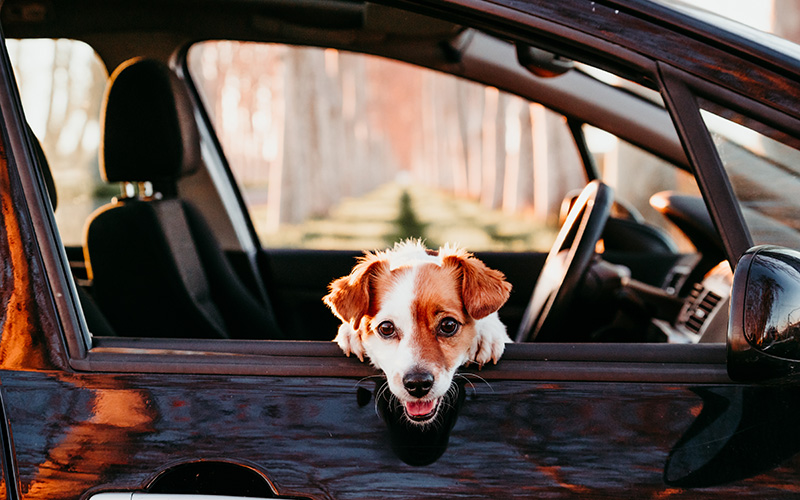Given stay-at-home orders and COVID travel restrictions that are only now beginning to ease, a recent poll by Leger Marketing unsurprisingly found that nearly half of Canadians are planning staycation road trips this summer—a 10% increase over 2020. Similarly, recent findings published by Tripadvisor show that 43% of Americans are planning to drive to travel destinations this summer. That means more pet parents in Canada and the U.S. will be hitting the staycation road trip trail this year with their canine family members.
To better ensure your clients return home with nothing but happy memories, here are five shareable travel safety tips for clients planning staycation road trips this summer with their dogs:
1. Make Your Car Pet-Safe for Travel
When road-tripping, consider setting up and securing a dog crate on the back seat or in the rear compartment of an SUV or van. There are also safety harnesses (or “doggy seatbelts”) for restraint in the back seat.
Make sure windows are not open enough on a road trip that your dog’s head can fit through. While dogs love sticking their heads out the window to experience the exciting scents and rush of wind, a flying insect or piece of gravel can easily cause injury. Also, make sure to set child locks on power windows. You dog could suffer neck injury or even suffocation if he accidentally steps on a window button and closes the window on himself.
2. Make Sure Your Dog Has Identification
Things happen during road trips: stopping for snacks, grabbing drinks, making bathroom stops, etc. Along the way, doors get opened. Should your dog get loose and run away, making sure your dog has collar tags or microchip ID better ensures your dog will be safely returned home.
For more about microchipping (including Pet Chip Registries in Canada and the U.S.), read Loss Prevention Tips and the Story of Kevin the Cat.
3. Do Not Leave Your Dog Inside a Hot Car
Being left inside a hot car with inadequate ventilation is the most common cause of heatstroke for dogs. Even in the shade with the windows down, parked cars can easily reach deadly temperatures, and it only takes a few minutes for a pet’s body temperature to dramatically rise and put their safety at risk. If you must make a stop during a staycation road trip where you cannot bring along your dog, have someone remain in the car with your dog. Make sure windows are open to allow ventilation, and make sure there’s plenty of water on hand for your dog to drink. Dehydration in pets can also lead to heatstroke.
4. Make Sure Your Dog Is Protected Against Fleas and Ticks
Hiking trails, campsites, and other outdoor areas can all harbor fleas and ticks, which can infect dogs with Lyme disease, heartworm, and other diseases. So, make sure your dog is up to date on preventive medications.
There are many types of preventives. Some are available over the counter. Others are available only through your veterinarian. Topical preventatives (typically applied at the back of the neck) include Frontline® Plus, Bravecto® Topical Solution, and Advantix®. Chewable preventatives include NexGard® and Simparica®, as well as Bravecto® Chew. Your veterinarian can make specific recommendations to help you choose the right product for your pet.
Never use a mosquito repellant on your dog that is not intended for pet use. Any formulas containing DEET should never be used on pets.
5. Don’t Assume Your Dog Can Swim
If your staycation road trip involves heading to a beach, lake, or other cooling location, don’t assume your dog can swim. Dogs may instinctively start to dog paddle in water, but that does not mean all dogs are natural swimmers—or even enjoy water. If it’s your dog’s first summer near water, take it slow. Don’t force or throw your pet into water.
Even if you dog can swim, make sure he’s wearing a lifejacket when you’re boating or doing any other water activity that would require a human to wear a lifejacket.






